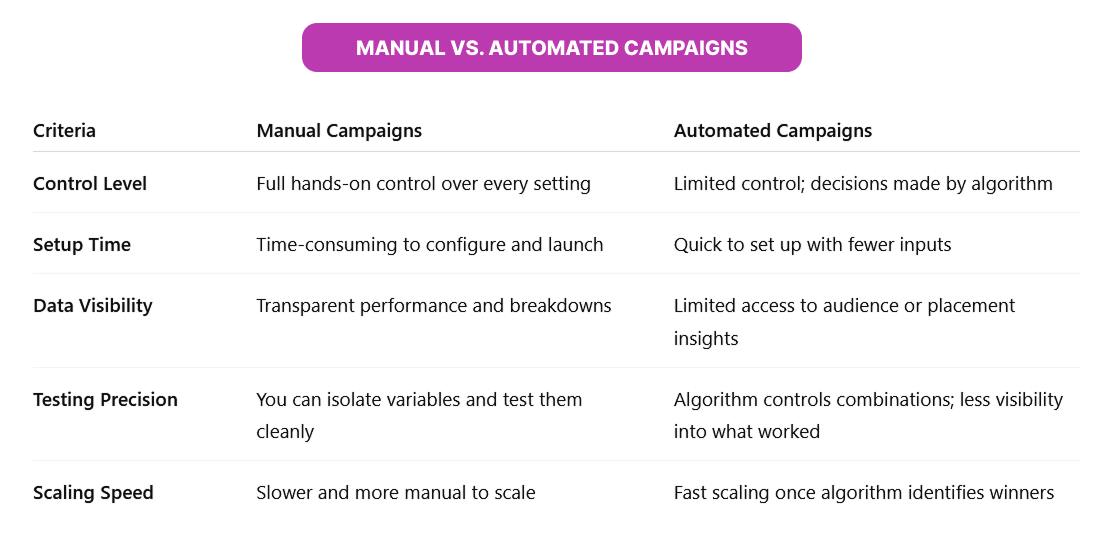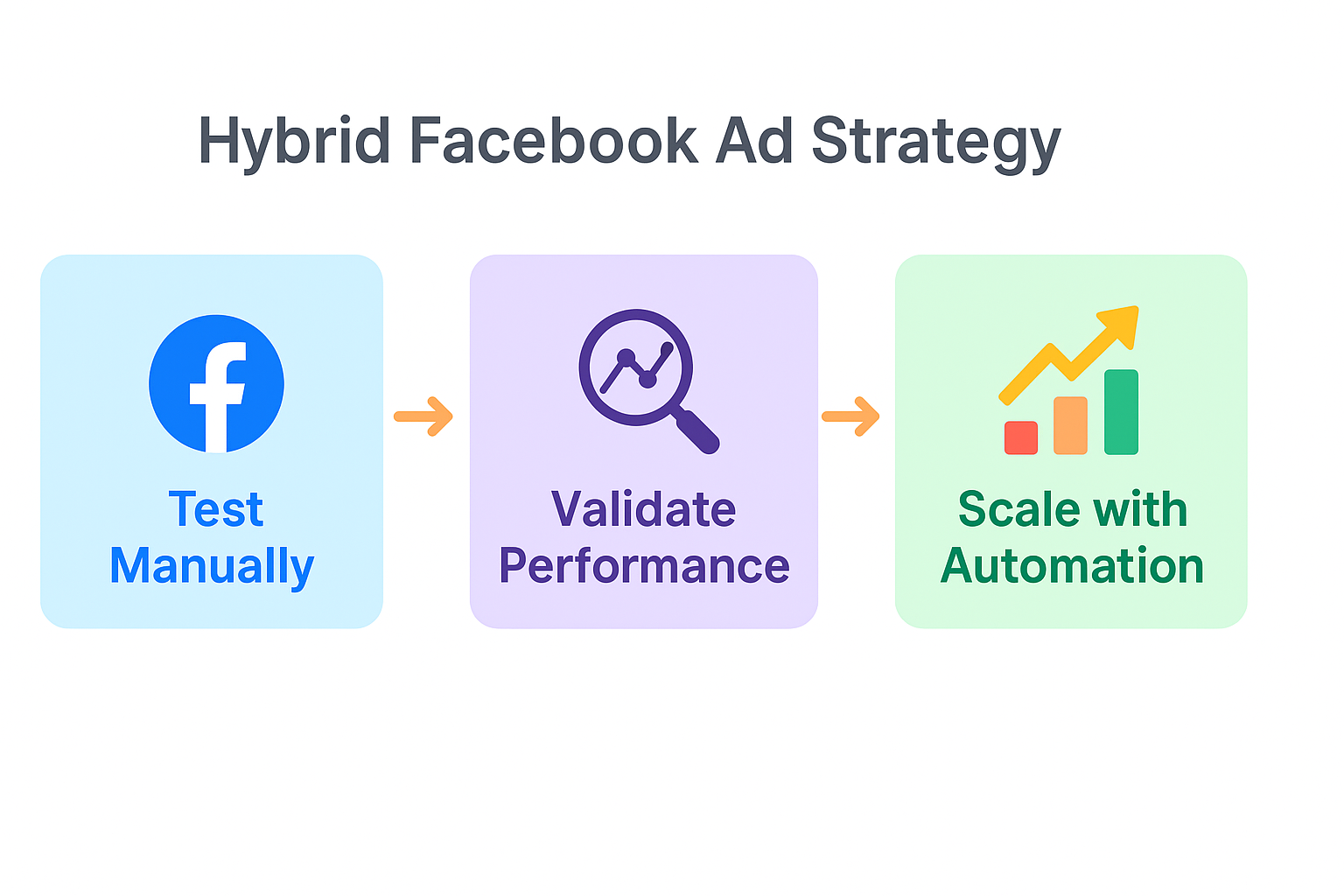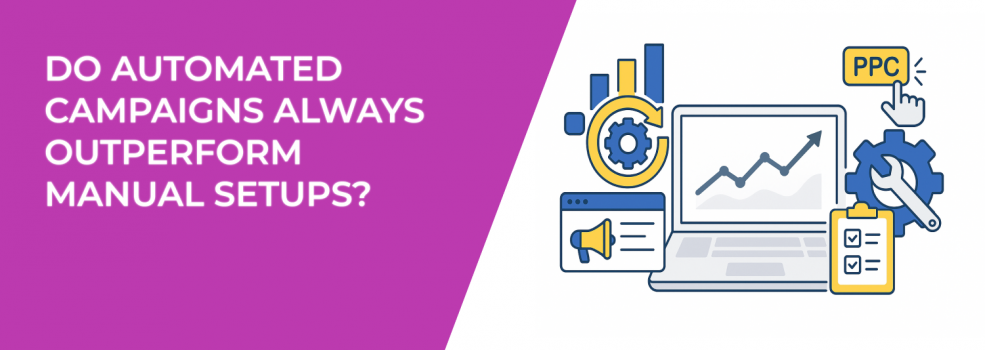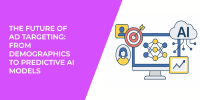Automated advertising campaigns are everywhere. From Meta’s Advantage+ to Google’s Performance Max, marketers are nudged to “let the algorithm decide.” And in many cases, automation helps — especially when you're working with high-volume accounts and tight deadlines.
But here’s the question savvy advertisers keep asking: do automated campaigns actually outperform manual setups across the board?
Let’s break it down.
What Is an Automated Campaign?
Automated campaigns use machine learning to optimize ad delivery with minimal input from the advertiser.

You provide the creative assets, budget, and a general objective (like leads, sales, or traffic), and the system handles:
-
Audience targeting: The algorithm uses behavioral data, lookalikes, or broad audiences to choose who sees your ad.
-
Placement allocation: Ads are shown across multiple surfaces (feeds, stories, reels, etc.) based on predicted performance.
-
Budget distribution: The platform shifts spend dynamically toward what it considers top performers.
-
Creative testing: It may mix headlines, images, and formats to find the best combination for each user.
In theory, automation removes the guesswork. But in practice? It depends on the inputs.
If your creative is weak, your pixel isn’t seasoned, or your objective is misaligned — automation can drain budget faster than you think.
For a breakdown of how different campaign types impact results, especially on Meta, check out this guide to Meta Ad Campaign Objectives.
When Automation Does Deliver
Automation shines when the algorithm has rich, clean data to work with. It’s particularly effective when:
-
You provide multiple high-quality creatives. The algorithm needs variety to test and optimize effectively. This includes not just visuals, but also multiple copy angles, formats, and calls to action.
-
Pixel data is reliable and conversion volume is steady. If the system has historical success data, it can identify patterns and prioritize high-intent users.
-
Your goal is scaling quickly. Automated campaigns can help uncover low-hanging opportunities across placements or regions that you wouldn’t have tested manually.
-
Your funnel is low-friction. If you’re selling a simple product or offering a quick lead magnet, automation can accelerate volume.
Need help preparing creative variations before you automate? These AI text and image generators can help you test faster.
The Risks of Relying on Automation Alone
Here’s what marketers often overlook: automation hides a lot of context.
You can’t always tell why something worked. Or what didn’t. And without that clarity, you lose your ability to iterate, scale, and make smart decisions across channels.
Here are the most common pitfalls:
-
Lack of segmentation insights: You don’t know which audiences, devices, or placements are driving conversions unless you dig into breakdowns manually.
-
Creative burnout goes unnoticed: The algorithm may favor one high-performing ad too heavily, showing it so often that users tune out.
-
Mismatch between volume and quality: You might get more leads, but if they’re unqualified or hard to close, your ROI tanks.
-
No clear testing feedback loop: If you’re testing a new creative angle or targeting segment, automation can blur the results instead of clarifying them.
In other words, automation can optimize for clicks, not clarity. If you're not careful, you'll end up spending more without learning anything useful.
When Manual Setups Still Win
Manual campaigns are slower to build. But they allow for full control and detailed insights which matters when you’re testing, troubleshooting, or running complex funnels.
Here’s where manual setups still outperform automation:
-
Testing creative or messaging angles: You can isolate variables (copy, visuals, CTAs) and learn what actually drives performance.
-
Audience comparisons and segmentation: Manual setups let you A/B test specific audience groups (e.g., interest-based vs. lookalikes) without algorithm interference.
-
Budget guardrails: You can cap spend per ad set to avoid runaway costs — especially during testing or learning phase resets.
-
Retargeting and sequencing: If you want to control how users move through your funnel (e.g., awareness → consideration → conversion), manual setup gives you the structure to do it.
This is especially important if you’re managing lead gen flows or targeting niche audiences. Before you launch, use this audience targeting guide to set yourself up for success.
A Smarter Way: Start Manual, Scale with Automation
One of the most effective strategies today is a hybrid structure.

-
Start with manual campaigns to test creatives, targeting, placements, and formats. This gives you clarity and confidence in what’s working.
-
Identify high-performing combinations based on conversion data, CTRs, and cost per result.
-
Rebuild those winners in a Meta Advantage+ campaign to scale efficiently using automation.
This approach gives you the best of both worlds: data-rich insights and automation-powered scaling.
Want to implement this? Here’s a practical walkthrough of how to combine Advantage+ and manual targeting.
Don’t Let Automation Replace Strategy
Automated campaigns are a tool — not a strategy.
If you’re not feeding the algorithm quality creative, clean pixel data, and well-aligned objectives, it won’t magically create performance. That’s why we recommend this deeper dive on improving campaign performance with Meta Advantage+ if you’re already running automated ads and not seeing the results you hoped for.
And if you’re thinking long term? Use this guide to automate your ad strategy sustainably.
Final Thoughts
Automation helps when you know what works. But when you don’t, it’s just expensive guessing at scale.
So test first. Learn fast. Then automate with intention.
That’s how you build campaigns that scale without sacrificing insight.

